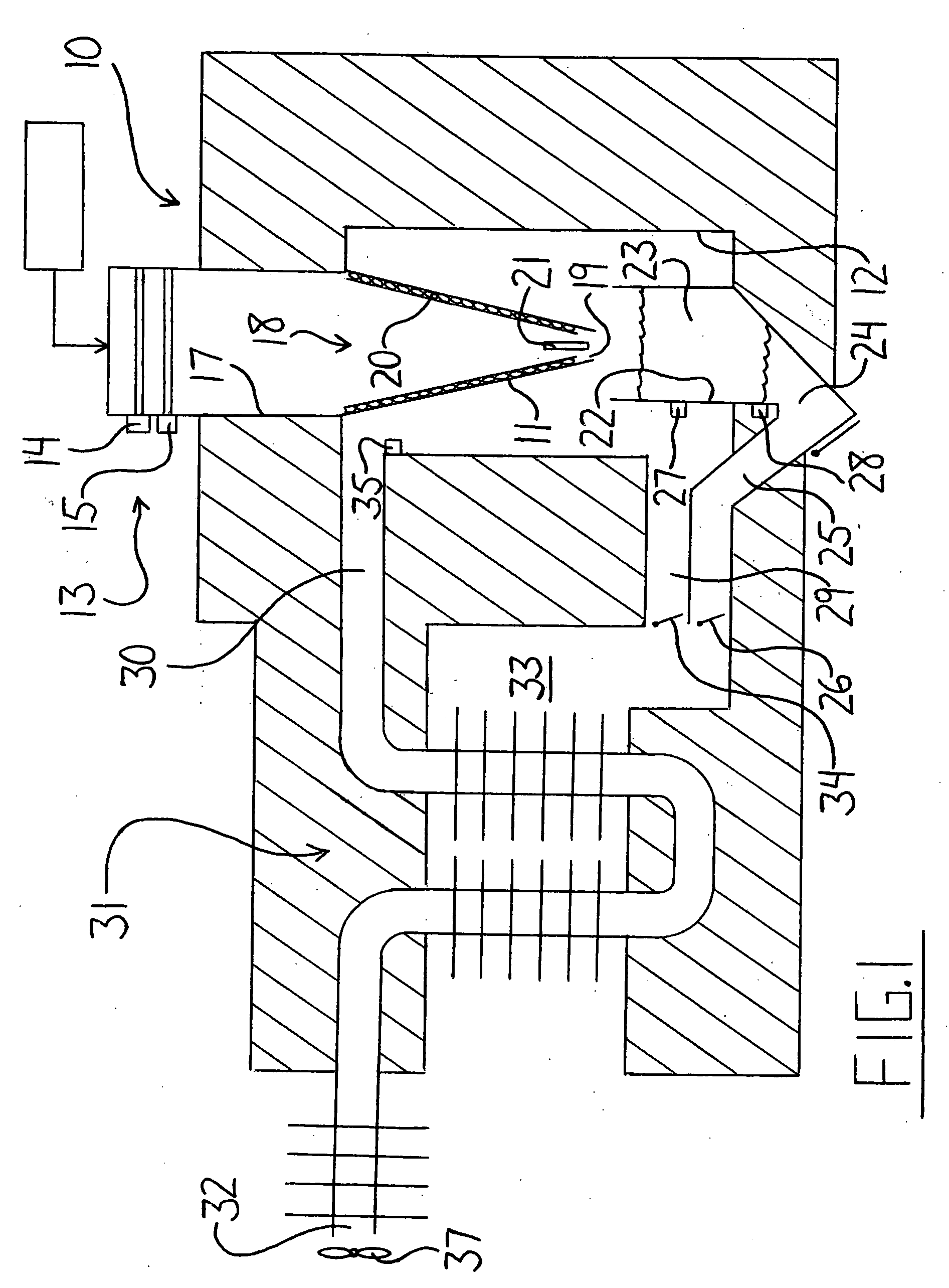Biomass conversion by combustion
a technology of biomass conversion and combustion, which is applied in the direction of combustion process, liquid hydrocarbon mixture production, inorganic chemistry, etc., can solve the problems of high undesirable disposal of deadstock in landfills or burial sites, and many jurisdictions currently face a crisis in the disposal of deadstock
- Summary
- Abstract
- Description
- Claims
- Application Information
AI Technical Summary
Benefits of technology
Problems solved by technology
Method used
Image
Examples
Embodiment Construction
[0091] In FIG. 1 is shown a combustion chamber generally indicated at 10 which includes an interior reaction vessel 11 and an exterior combustion vessel 12 within which the combustion occurs. Feed materials are fed into the reaction vessel 11 by a feeding system generally indicated at 13 which includes an air lock system defined by gates 14 and 15 which can be operated sequentially to allow materials between the gates to be deposited into the reaction vessel 11 for breakdown. A conveyor 16 is provided in the form of an elevator which raises the materials from the ground to the necessary height above the feeding system 13 so that when dropped into the feeding system, the remainder of the operation is effected by gravity through the primary chamber 11 into the exterior chamber 12 without the necessity for any moving elements to carry the fed materials. From the feed system 13, the feed materials are carried through a chute 17 and into the interior of the reaction vessel 11.
[0092] The...
PUM
| Property | Measurement | Unit |
|---|---|---|
| temperature | aaaaa | aaaaa |
| retention time | aaaaa | aaaaa |
| temperature | aaaaa | aaaaa |
Abstract
Description
Claims
Application Information
 Login to View More
Login to View More - R&D
- Intellectual Property
- Life Sciences
- Materials
- Tech Scout
- Unparalleled Data Quality
- Higher Quality Content
- 60% Fewer Hallucinations
Browse by: Latest US Patents, China's latest patents, Technical Efficacy Thesaurus, Application Domain, Technology Topic, Popular Technical Reports.
© 2025 PatSnap. All rights reserved.Legal|Privacy policy|Modern Slavery Act Transparency Statement|Sitemap|About US| Contact US: help@patsnap.com



